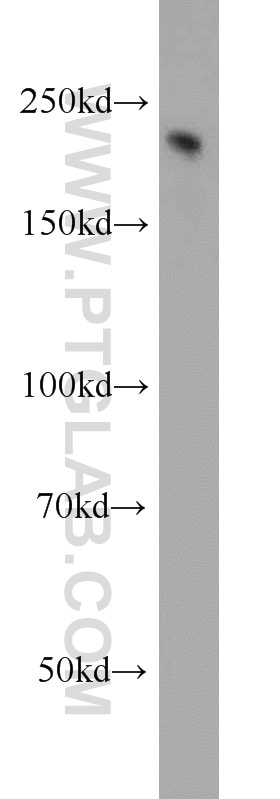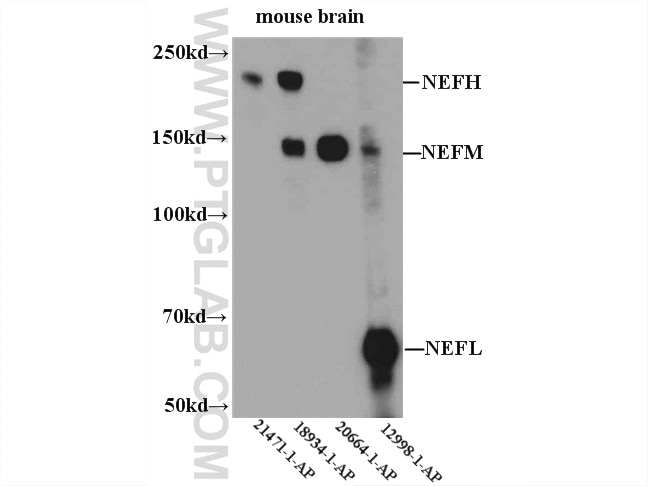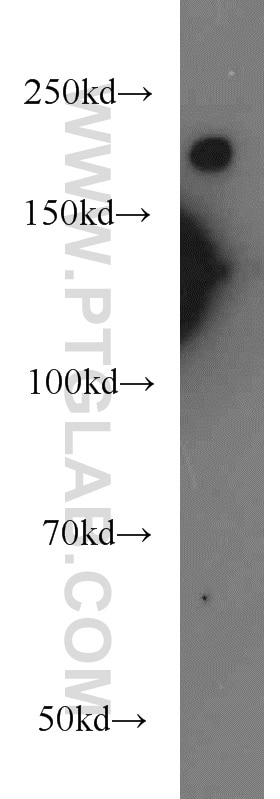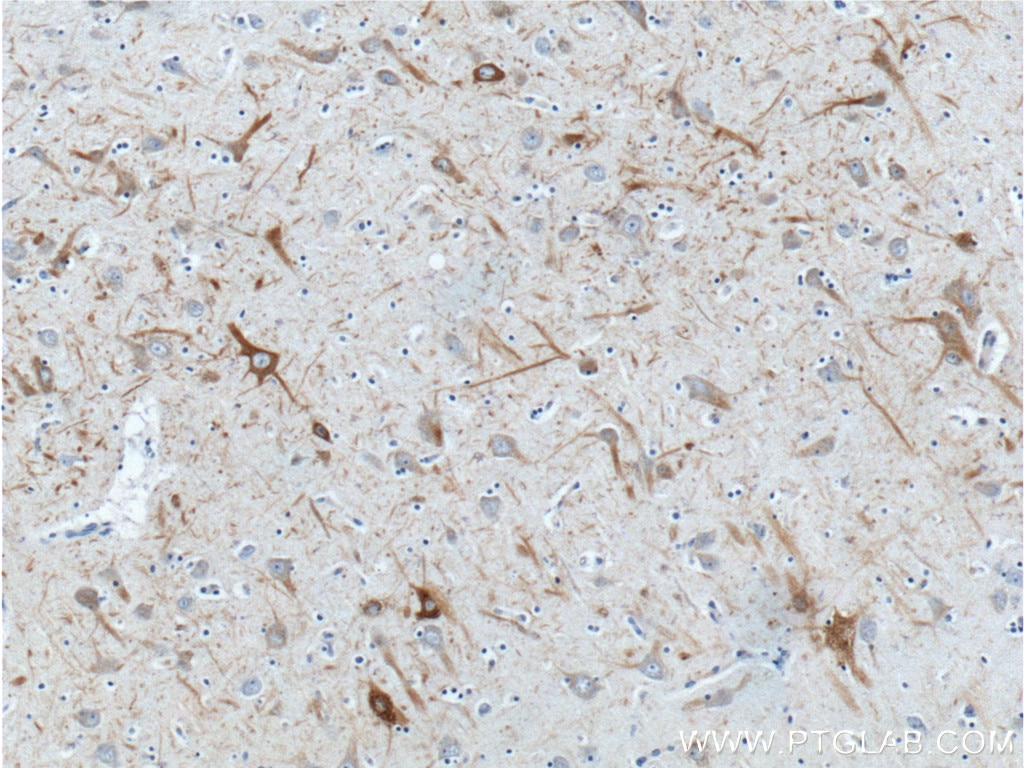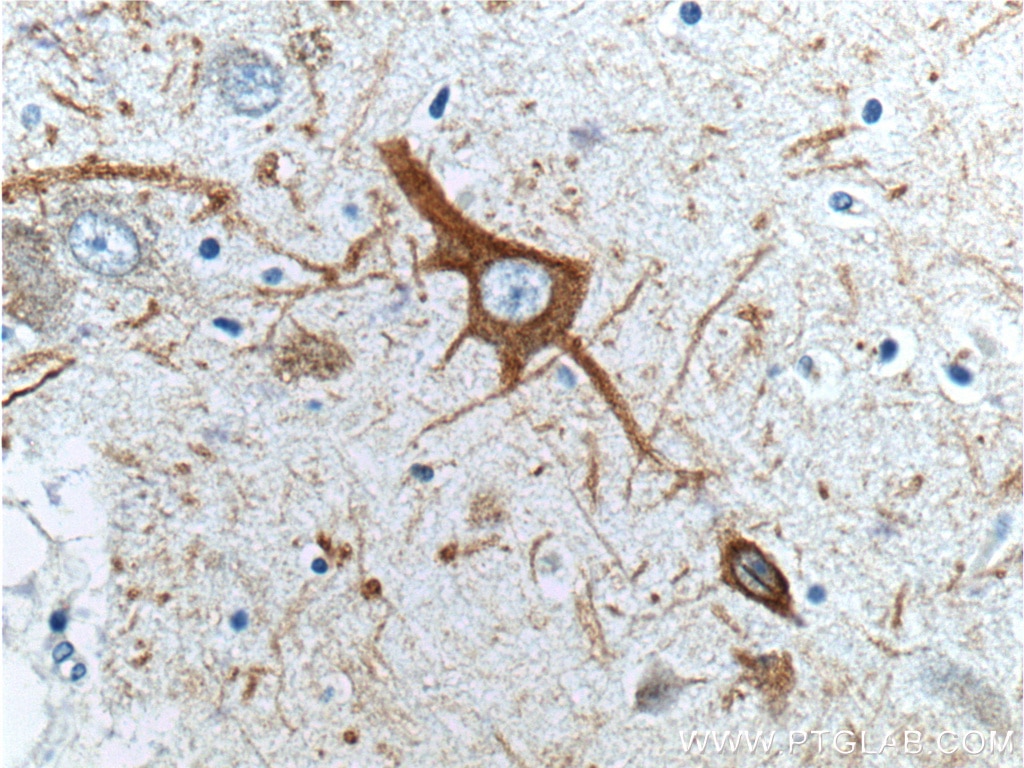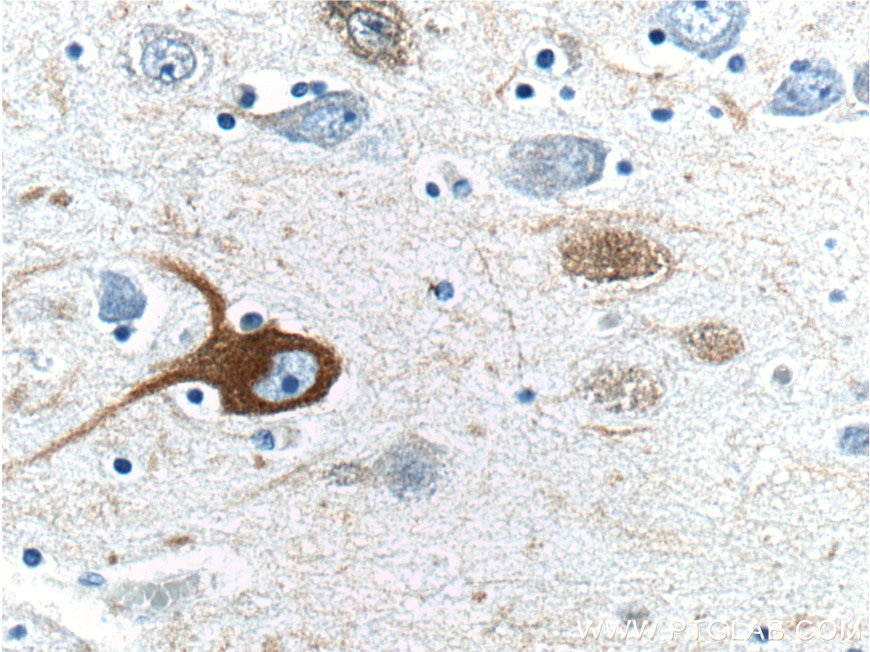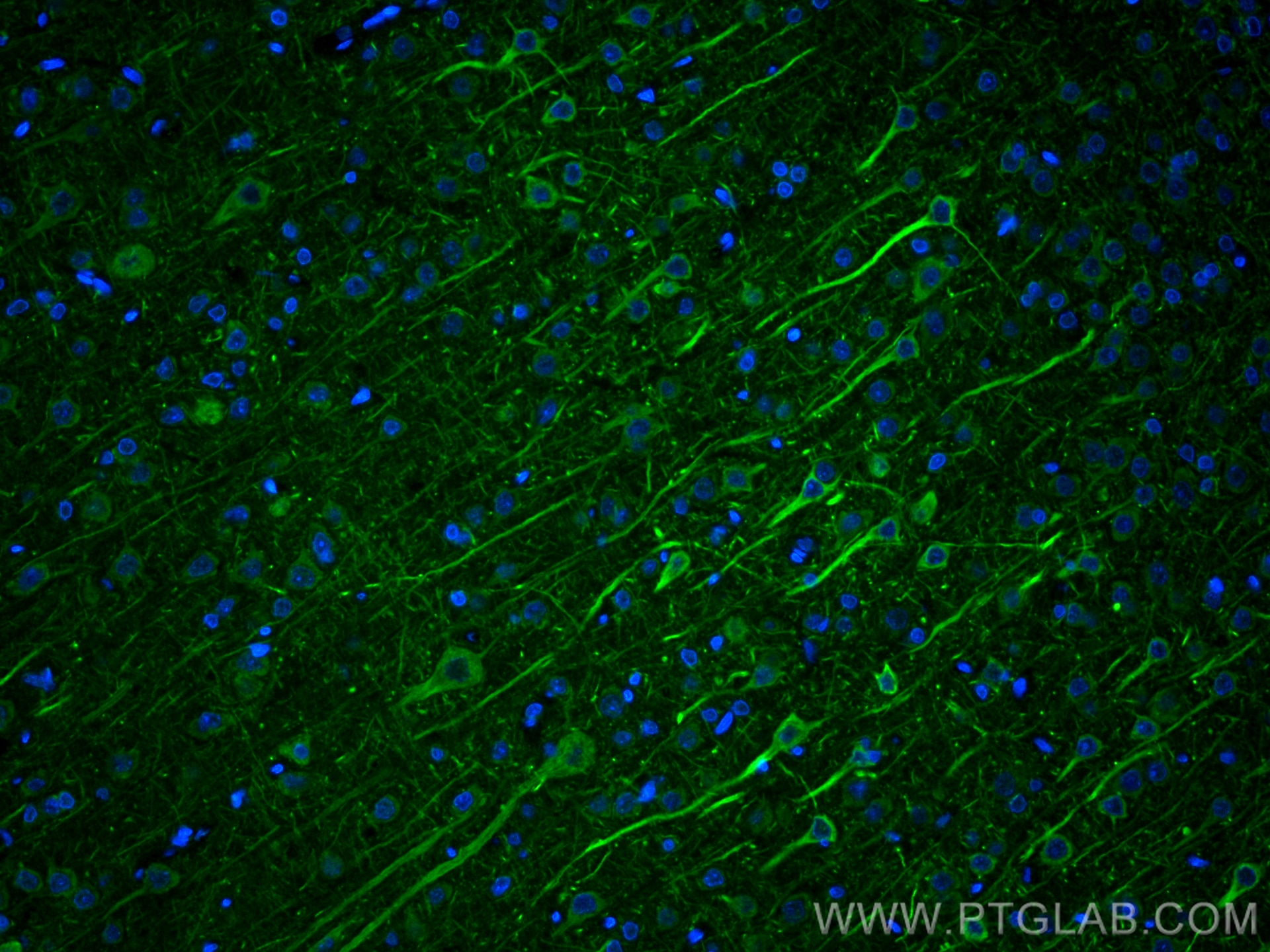NF-H/NF200 Polyklonaler Antikörper
NF-H/NF200 Polyklonal Antikörper für WB, IHC, IF-P, ELISA
Wirt / Isotyp
Kaninchen / IgG
Getestete Reaktivität
human, Maus, Ratte und mehr (1)
Anwendung
WB, IHC, IF-P, ELISA
Konjugation
Unkonjugiert
Kat-Nr. : 21471-1-AP
Synonyme
Geprüfte Anwendungen
| Erfolgreiche Detektion in WB | Maushirngewebe |
| Erfolgreiche Detektion in IHC | humanes Hirngewebe Hinweis: Antigendemaskierung mit TE-Puffer pH 9,0 empfohlen. (*) Wahlweise kann die Antigendemaskierung auch mit Citratpuffer pH 6,0 erfolgen. |
| Erfolgreiche Detektion in IF-P | Rattenhirngewebe |
Empfohlene Verdünnung
| Anwendung | Verdünnung |
|---|---|
| Western Blot (WB) | WB : 1:1000-1:4000 |
| Immunhistochemie (IHC) | IHC : 1:50-1:500 |
| Immunfluoreszenz (IF)-P | IF-P : 1:200-1:800 |
| It is recommended that this reagent should be titrated in each testing system to obtain optimal results. | |
| Sample-dependent, check data in validation data gallery | |
Veröffentlichte Anwendungen
| WB | See 3 publications below |
| IF | See 4 publications below |
Produktinformation
21471-1-AP bindet in WB, IHC, IF-P, ELISA NF-H/NF200 und zeigt Reaktivität mit human, Maus, Ratten
| Getestete Reaktivität | human, Maus, Ratte |
| In Publikationen genannte Reaktivität | Affe, Maus, Ratte |
| Wirt / Isotyp | Kaninchen / IgG |
| Klonalität | Polyklonal |
| Typ | Antikörper |
| Immunogen | NF-H/NF200 fusion protein Ag15249 |
| Vollständiger Name | neurofilament, heavy polypeptide |
| Berechnetes Molekulargewicht | 1026 aa, 112 kDa |
| Beobachtetes Molekulargewicht | 200 kDa |
| GenBank-Zugangsnummer | BC073969 |
| Gene symbol | NF-H |
| Gene ID (NCBI) | 4744 |
| Konjugation | Unkonjugiert |
| Form | Liquid |
| Reinigungsmethode | Antigen-Affinitätsreinigung |
| Lagerungspuffer | PBS with 0.02% sodium azide and 50% glycerol |
| Lagerungsbedingungen | Bei -20°C lagern. Nach dem Versand ein Jahr lang stabil Aliquotieren ist bei -20oC Lagerung nicht notwendig. 20ul Größen enthalten 0,1% BSA. |
Hintergrundinformationen
NEFH, also named as KIAA0845 and NFH, Belongs to the intermediate filament family. It has an important function in mature axons that is not subserved by the two smaller NF proteins. Neurofilaments are the 10nm intermediate filaments found specifically in neurons. They are a major component of the cell's cytoskeleton, and provide support for normal axonal radial growth. Neurofilaments usually contain three intermediate filament proteins: L, M, and H which are involved in the maintenance of neuronal caliber. The names given to the three major neurofilament subunits are based upon the apparent molecular weight of the mammalian subunits on SDS-PAGE:NF-L, 65-68kd; NF-M,145-160kd and NF-H, 200-220kd. This antibody recognize NEFH only.
Protokolle
| PRODUKTSPEZIFISCHE PROTOKOLLE | |
|---|---|
| WB protocol for NF-H/NF200 antibody 21471-1-AP | Protokoll herunterladen |
| IHC protocol for NF-H/NF200 antibody 21471-1-AP | Protokoll herunterladenl |
| IF protocol for NF-H/NF200 antibody 21471-1-AP | Protokoll herunterladen |
| STANDARD-PROTOKOLLE | |
|---|---|
| Klicken Sie hier, um unsere Standardprotokolle anzuzeigen |
Publikationen
| Species | Application | Title |
|---|---|---|
Mater Today Bio Ropivacaine microsphere-loaded electroconductive nerve dressings for long-acting analgesia and functional recovery following diabetic peripheral nerve injury | ||
Sci Total Environ Neurotoxicity and biomarkers of zinc oxide nanoparticles in main functional brain regions and dopaminergic neurons. | ||
iScience Synthetic amyloid-β oligomers drive early pathological progression of Alzheimer's disease in nonhuman primates. | ||
J Alzheimers Dis A mass-producible macaque model displays a durable Alzheimer-like cognitive deficit and hallmark amyloid-β/tau/neurofilament light chain pathologies | ||
Toxicol Appl Pharmacol Rosmarinic acid exerts a neuroprotective effect on spinal cord injury by suppressing oxidative stress and inflammation via modulating the Nrf2/HO-1 and TLR4/NF-κB pathways. | ||
Plast Reconstr Surg Glob Open A Novel, Sterilized Microvascular Tissue Product Improves Healing in a Murine Pressure Ulcer Model. |
